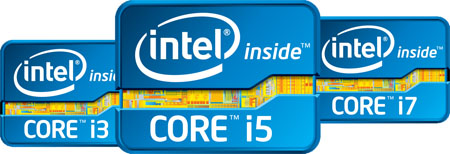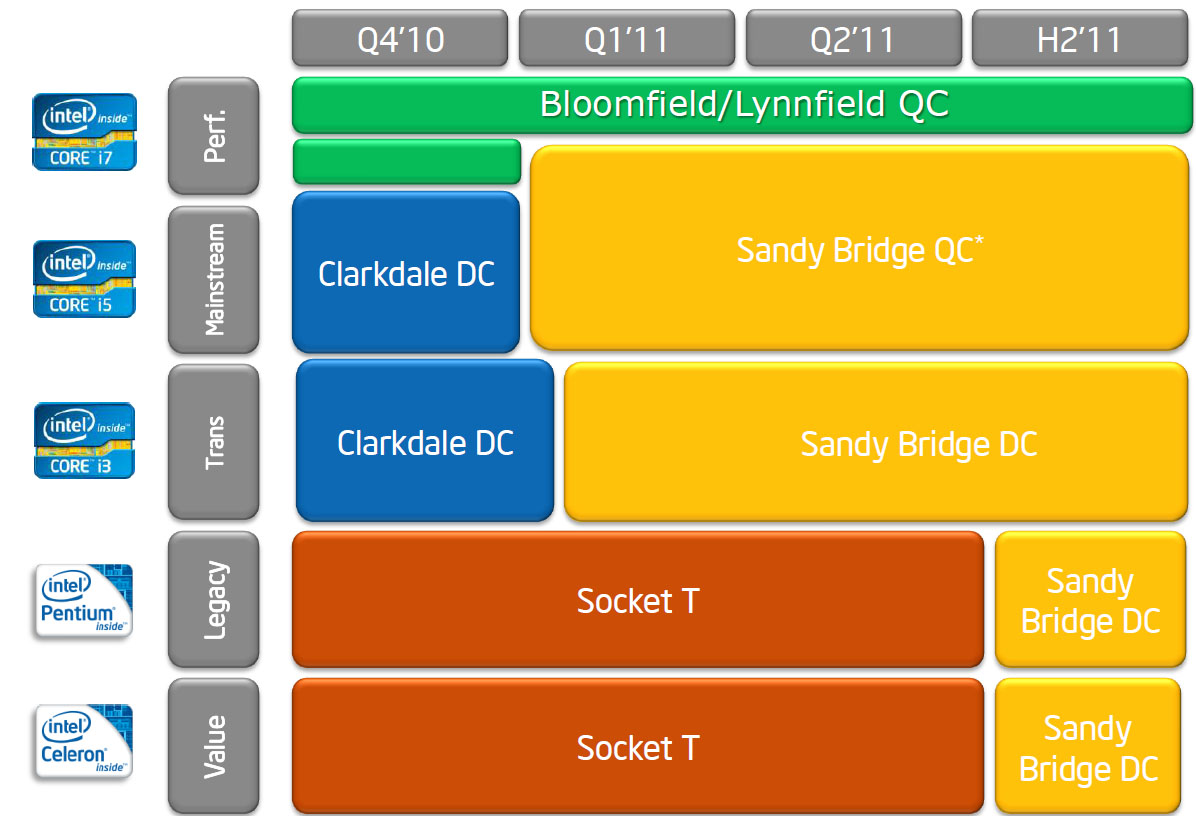Intel’s Second-Gen Core CPUs: The Sandy Bridge Review
Although the processing cores in Intel’s Sandy Bridge architecture are decidedly similar to Nehalem, the integration of on-die graphics and a ring bus improves performance for mainstream users. Intel’s Quick Sync is this design’s secret weapon, though.
Core i7-2600K, Core i5-2500K, Core i5-2400, And Core i3-2100 Reviewed
Editor’s Note: Eager to show off what is has done with Intel’s Sandy Bridge architecture, system builder CyberPower PC is offering Tom’s Hardware's audience the opportunity to win a new system based on Intel’s Core i7-2600K processor. Read through our review, and then check out the last page for more information on the system, plus a link to enter our giveaway!
The high-end desktop processor market is a one-horse race, with Intel’s LGA 1366-based Core i7-900-series CPUs pretty much tromping along uncontested. If you have the money and are building a performance-oriented machine, it’s hard to beat an overclocked Core i7-950. Power users who really need the punch of a six-core chip can go Core i7-970—just be ready to pay out the ears for the privilege of owning one.
It’s the mainstream where we see more interesting battles being waged. Funny how healthy competition has a habit of forcing more aggressive prices, isn’t it? For example, the quad-core Core i5-760 is compelling at $200. But so is AMD’s six-core Phenom II X6 1075T. And while AMD’s Black Edition parts captured the hearts of overclocking enthusiasts long ago, Intel more recently shipped a couple of K-series SKUs that bucked the company’s habit of only unlocking the multipliers on thousand-dollar Extreme Edition parts.
And now we have a new architecture from Intel, called Sandy Bridge. The last time Intel launched a processor design, it started with high-end Core i7-900-series chips and let the technology trickle down to the mainstream and entry-level derivatives. This time is different. Sandy Bridge is going to have to swim its way upstream, surfacing on the flagship LGA 2011 interface in the second half of this year for the real workstation-oriented aficionados.
Intel’s Here And Now
That’s a long way away, though. Between now and then, LGA 1366 is supposed to remain at the top of Intel’s stack, while LGA 1155-based processors centering on Sandy Bridge gobble up all of the volume as a result of what Intel claims is a ~30% performance improvement versus the Lynnfield- and Clarkdale-based processors.
Naturally, this means trouble for an AMD that continues to launch incrementally faster versions of its existing architecture—but nothing that’d give it the double-digit speed-up needed to fend off a new microarchitecture from its competition. The only way to strike back at this point is with lower prices, and that's probably not the route AMD wants to be taking. We expect Bulldozer, the company's own next-gen architecture, sometime in 2011; that launch can't come soon enough.
Get Tom's Hardware's best news and in-depth reviews, straight to your inbox.
A large enough boost from Sandy Bridge would also make Intel’s Core i7-900-series vulnerable too, though. Right now, these are, at minimum, $300 parts (that’s just to get in the door with a -950) that drop into generally more expensive motherboards requiring pricier triple-channel memory kits. I’ve been saying all along that the X58 platform would remain, definitively, Intel’s crown jewel on the desktop. But after running the numbers I’ve run on Sandy Bridge, I have to wonder if X58’s days are numbered a little sooner than the company planned.
Sandy Bridge has a couple of other surprises up its sleeve—not all of them destined to go down as smoothly as a 1996 Dom Perignon on New Year’s Eve. For one, overclocking on an Intel platform is drastically different, and the LN2-drinking crowd probably won’t like it very much. There’s also a big emphasis on integrated graphics, which we’ve seen prematurely praised as a potential alternative to entry-level discrete graphics. That doesn't turn out to be the case, at least on the desktop.
On the other hand, Sandy Bridge comes armed with a block of fixed function logic that specifically addresses video encoding. AMD and Nvidia have no answer to this, are a year behind Intel with a competitive solution, and get completely outperformed today in video workloads. We also have a couple of unlocked SKUs that really give this architecture, manufactured at 32 nm, room to stretch its legs.
Putting Sandy Bridge To The Test
Leading up to the Sandy Bridge architecture’s launch, Intel sent over four SKUs from its upcoming lineup: Core i7-2600K, Core i5-2500K, Core i5-2400, and Core i3-2100. We put all four processors through a brand new benchmark suite for 2011, along with Bloomfield-, Lynnfield-, Clarkdale-, and Yorkfield-based chips from Intel, plus Thuban- and Deneb-based CPUs from AMD.
While many of you were enjoying time away from work around Christmas and digging out of blizzard-like conditions ahead of New Year's Eve, the Tom's Hardware Bakersfield, CA lab was kept busy and warm by the latest bleeding-edge CPUs being run through their paces. Shall we?
Current page: Core i7-2600K, Core i5-2500K, Core i5-2400, And Core i3-2100 Reviewed
Next Page Inside Of Sandy Bridge: Cores And Cache-
cangelini MoneyFace pEditor, page 10 has mistakes. Its LGA1155, not LGA1555.Reply
Fixed, thanks Money! -
juncture "an unlocked Sandy Bridge chip for $11 extra is actually pretty damn sexy."Reply
i think the author's saying he's a sexually active cyberphile -
fakie Contest is limited to residents of the USA (excluding Rhode Island) 18 years of age and older.Reply
Everytime there's a new contest, I see this line. =( -
englandr753 Great article guys. Glad to see you got your hands on those beauties. I look forward to you doing the same type of review with bulldozer. =DReply -
joytech22 Wow Intel owns when it came to converting video, beating out much faster dedicated solutions, which was strange but still awesome.Reply
I don't know how AMD's going to fare but i hope their new architecture will at least compete with these CPU's, because for a few years now AMD has been at least a generation worth of speed behind Intel.
Also Intel's IGP's are finally gaining some ground in the games department. -
cangelini fakieContest is limited to residents of the USA (excluding Rhode Island) 18 years of age and older.Everytime there's a new contest, I see this line. =(Reply
I really wish this weren't the case fakie--and I'm very sorry it is. We're unfortunately subject to the will of the finance folks and the government, who make it hard to give things away without significant tax ramifications. I know that's of little consolation, but that's the reason :(
Best,
Chris -
LuckyDucky7 "It’s the value-oriented buyers with processor budgets between $100 and $150 (where AMD offers some of its best deals) who get screwed."Reply
I believe that says it all. Sorry, Intel, your new architecture may be excellent, but unless the i3-2100 series outperforms anything AMD can offer at the same price range WHILE OVERCLOCKED, you will see none of my desktop dollars.
That is all.




